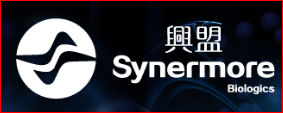预约演示
更新于:2025-05-07
Asthma
哮喘
更新于:2025-05-07
基本信息
别名 ASTHMA、ASTHMA BRONCHIAL、ASTHMA, BRONCHIAL + [42] |
简介 A form of bronchial disorder with three distinct components: airway hyper-responsiveness (RESPIRATORY HYPERSENSITIVITY), airway INFLAMMATION, and intermittent AIRWAY OBSTRUCTION. It is characterized by spasmodic contraction of airway smooth muscle, WHEEZING, and dyspnea (DYSPNEA, PAROXYSMAL). |
关联
1,722
项与 哮喘 相关的药物靶点 |
作用机制 IgE抑制剂 |
原研机构 |
非在研适应症- |
最高研发阶段批准上市 |
首次获批国家/地区 中国 |
首次获批日期2024-09-26 |
靶点 |
作用机制 IL-4Rα抑制剂 |
在研机构 |
最高研发阶段批准上市 |
首次获批国家/地区 中国 |
首次获批日期2024-09-10 |
作用机制 PDE3抑制剂 [+1] |
在研机构 |
最高研发阶段批准上市 |
首次获批国家/地区 美国 |
首次获批日期2024-06-26 |
7,996
项与 哮喘 相关的临床试验NCT05113394
Preventing Childhood Asthma Using Prophylactic House Dust Mite Allergen Immunotherapy
To establish efficacy and safety of HDM sublingual Immunotherapy (HDM-SLIT) by comparing Odactra and placebo, when given sublingually for 3 years to high risk infants aged between 6 to 12 months at enrollment in preventing the development of asthma, assessed 1.5 years after discontinuation of treatment.
开始日期2027-02-01 |
申办/合作机构 |
NCT02809235
The Role of Cholecystokinin and the Cholecystokinin Receptor in the Airway Smooth Muscle of Asthmatics
In this proof of concept study, the investigators aim to determine if supplementation with coconut oil causes an increase in cholecystokinin and cholecystokinin receptor expression in the airway smooth muscle of lean asthmatics, and whether these changes correlate with changes in airway stiffness (estimated by bronchodilator reversibility, airway reactivity, and airway resistance) or symptom control.
The investigators propose a 5 week, single center trial in 20 lean patients with mild asthma (not taking inhaled corticosteroids) aged 18 and older. Subjects will supplement their usual diets with 3 tablespoons of coconut oil, a commercially available oil with high dodecanoic acid content, for 3 weeks. To quantify changes in airway smooth muscle cholecystokinin and cholecystokinin-receptor expression, each subject will undergo bronchoscopy with endobronchial biopsies before and after coconut oil ingestion.
For the secondary analysis, subjects will also complete spirometry with bronchodilator testing, methacholine challenge, body plethysmography, and an Asthma Control Questionnaire (ACQ) before and after the dietary intervention. This information will be used to compare the changes in airway smooth muscle cholecystokinin and cholecystokinin receptor expression to changes in bronchodilator reversibility, airway reactivity, airway resistance, and symptom control.
In the exploratory aims, the investigators will correlate the changes in airway smooth muscle cholecystokinin and cholecystokinin receptor expression with changes in FEV1 and peak flow measurements.
The investigators therefore hope to elucidate information about the mechanistic role of cholecystokinin in airway smooth muscle stiffness and contraction.
The investigators propose a 5 week, single center trial in 20 lean patients with mild asthma (not taking inhaled corticosteroids) aged 18 and older. Subjects will supplement their usual diets with 3 tablespoons of coconut oil, a commercially available oil with high dodecanoic acid content, for 3 weeks. To quantify changes in airway smooth muscle cholecystokinin and cholecystokinin-receptor expression, each subject will undergo bronchoscopy with endobronchial biopsies before and after coconut oil ingestion.
For the secondary analysis, subjects will also complete spirometry with bronchodilator testing, methacholine challenge, body plethysmography, and an Asthma Control Questionnaire (ACQ) before and after the dietary intervention. This information will be used to compare the changes in airway smooth muscle cholecystokinin and cholecystokinin receptor expression to changes in bronchodilator reversibility, airway reactivity, airway resistance, and symptom control.
In the exploratory aims, the investigators will correlate the changes in airway smooth muscle cholecystokinin and cholecystokinin receptor expression with changes in FEV1 and peak flow measurements.
The investigators therefore hope to elucidate information about the mechanistic role of cholecystokinin in airway smooth muscle stiffness and contraction.
开始日期2026-11-01 |
申办/合作机构 |
NCT05744869
School-based Asthma Therapy to Advance Health Equity Among Historically Marginalized Children
The goal of this research trial is to: 1) Solidify a population health SBAT implementation strategy with our longstanding community collaborators, 2) Perform a district-wide hybrid type 3, stepped-wedge, cluster randomized trial, and 3) Assess the supportive resource utilization and essential features of SBAT to extend sustainability and fidelity in a cost-effective manner.
开始日期2026-08-01 |
申办/合作机构 |
100 项与 哮喘 相关的临床结果
登录后查看更多信息
100 项与 哮喘 相关的转化医学
登录后查看更多信息
0 项与 哮喘 相关的专利(医药)
登录后查看更多信息
190,757
项与 哮喘 相关的文献(医药)2025-12-31·Pulmonology
Mendelian randomisation studies for causal inference in chronic obstructive pulmonary disease: A narrative review
Review
作者: Yang, Yuqiong ; Wang, Mingdie ; Wang, Fengyan ; Miao, Chengyu ; Chen, Zizheng ; Chen, Tingnan ; Liang, Zhenyu ; Li, Xueping ; Chen, Rongchang ; Peng, Chusheng ; Feng, Shengchuan ; Zhou, Zifei
2025-12-31·Annals of Medicine
Evaluation of bronchial hyperresponsiveness in asthmatic paediatric patients using mannitol challenge test – Impacts of body mass index
Article
作者: Leung, Sharon S. Y. ; Cheng, James-Wesley ; Chan, Kate C. C. ; Tsang, Helen S. L. ; Chan, Jasmine ; Chan, Hak-Kim ; Tang, Patricia ; Yu, Michelle ; Lam, Jenny K. W. ; Zeng, Ping ; Brannan, John D. ; Kui, Oliver Y. H. ; Li, Albert M. ; Cheung, Yin Ting
2025-12-31·European Clinical Respiratory Journal
Effects of alcohol consumption from early adolescence on lung function and development of COPD – a retrospective cohort study
Article
作者: Nielsen, Line Bjerrehave ; Weinreich, Ulla Møller ; King, Mathias Therkelsen
6,111
项与 哮喘 相关的新闻(医药)2025-05-05
·生物探索
引言在体内深处,数以万亿计的微生物正在忙碌地生活。它们组成了肠道菌群,一个复杂而充满活力的“第二基因组”,对消化、免疫甚至情绪都起着至关重要的作用。长期以来,研究人员一直在探索这个微观世界与人类健康之间的联系,我们知道不同种类的细菌与各种健康状况有关。但即使是同一种类的细菌,它们内部也存在巨大的差异,就像我们人类一样,虽然同属智人物种,但每个个体都是独特的。这些更精微的、菌株水平(strain-level)的差异,是否也隐藏着与健康和我们生活环境相关的秘密?它们如何分布在全球各地?又如何影响着不同人群的健康?4月30日一项发表在《Cell》上的重磅研究“Global genetic structure of human gut microbiome species is related to geographic location and host health”,以前所未有的规模和深度,回答了这些问题。这项研究汇集了来自全球 42个国家 的 32,152份 人类肠道样本,构建了数百种肠道细菌的菌株系统发育树(strain phylogenies)。研究发现,肠道里特定菌株的组成,竟然与居住的地理位置紧密相连,仿佛肠道居民也有自己的“护照”。更令人兴奋的是,这些看似细微的菌株差异,被发现与一系列重要的人类表型和疾病存在显著关联,从婴儿的生长发育,到老年人的健康衰老,甚至是像黑色素瘤和前列腺癌这样的严重疾病。 菌株分支在特定人群或疾病状态下表现出惊人的富集。这项研究不仅仅是增加了我们对肠道菌群的认识,它正在颠覆我们过去仅停留在物种层面的理解,揭示了菌株多样性如何作为连接地理、传播和人类健康的桥梁。肠道菌群“有护照”?菌株分布与地理位置紧密相关这项研究首先确认了一个重要发现:我们肠道里同一种细菌的不同菌株,它们的地理分布并非随意,而是与宿主的地理位置高度相关。通过将样本的地理距离与对应菌株的系统发育距离进行比较,研究发现,在分析的583个物种中,有456个表现出显著的地理差异(Mantel检验,FDR < 0.05)。这意味着,来自不同国家的人,他们肠道里同一种细菌的菌株往往在遗传上差异更大。有些物种的地理分层尤其明显,比如Eubacterium ventriosum,其系统发育树与地理位置的相关性高达0.57(分析了2582个样本)。又比如Lachnospiraceae家族的一个未知物种,相关性为0.46(分析了6553个样本),而Ruminococcus torques的相关性为0.38(分析了7063个样本)。相比之下,像Alistipes onderdonkii这样的物种,其菌株地理分层就非常弱,相关性仅为0.02(分析了12042个样本)。进一步分析发现,Lachnospiraceae家族的物种整体上表现出更高的地理分层效应(基因集富集分析,NES=1.44,FDR=0.01)。这提示我们,某些特定的微生物类群可能与宿主共享了更强的进化历史,或者受到了地理环境的更深刻影响。“社交达人” vs. “宅家菌”:传播能力塑造地理格局那么,为什么有些菌株全球分布广泛,有些却高度局限在特定地区呢?研究人员提出了一个有趣的假说:这可能与菌株的水平传播(horizontal transmission)能力有关。那些更容易在人与人之间传播的菌株,可能更容易跨越地理障碍,从而降低其地理分层。为了验证这一点,研究团队估计了这583个物种在同一国家但不同研究人群中的菌株共享率(作为传播性的代理指标)。结果发现,物种的传播性与地理分层效应呈负相关(Pearson相关系数为-0.21,p值为3×10^-7)。也就是说,传播性越强的物种,其菌株地理差异越小。这个发现非常直观:那些喜欢“出门旅行”的菌株,自然不会只待在同一个地方,而那些“宅家”的菌株,则更容易在特定地理区域内形成独特的遗传群体。这种传播能力与地理分层的反向关系,为理解肠道微生物的生物地理学(biogeography)提供了新的视角。菌株记录我们的生命轨迹,特别是年龄除了地理位置,肠道菌株的差异还与广泛的人类表型相关。在本次分析的256个表型中,年龄是与菌株系统发育差异关联最普遍的因素,共关联了253个物种的系统发育。其次是身体质量指数(BMI),关联了12个物种;性别关联了6个物种。一个最重要的年龄相关发现是关于长双歧杆菌(Bifidobacterium longum)。研究发现,在欧洲和非洲样本中,长双歧杆菌的系统发育树都呈现出明显的婴儿特异性菌株(infant-specific clades)。系统发育分析显示,婴儿(定义为小于2岁)和成人之间存在清晰的菌株分离。研究进一步揭示,婴儿特异性菌株中包含两个主要分支:一个主要富集了B. longum subsp. infantis的参考基因组,在欧洲和非洲婴儿中都有出现;另一个较小的分支富集了B. longum subsp. suis的参考基因组,在非洲样本中显著富集(泛化线性模型GLM在非洲样本中的log-odds值为-3.32,p值为8.13×10^-5),这与先前在孟加拉国婴儿中观察到的结果一致。通过平均核苷酸同一性(average nucleotide identity, ANI)分析和碳水化合物活性酶(carbohydrate-active enzymes, CAZymes)预测,研究证实了不同分支在代谢能力上的差异,例如婴儿特异性菌株富集了分解母乳中复杂糖类所需的酶,这与它们在婴儿期独特的饮食结构相适应。这些结果有力地支持了不同生命阶段对应独特的菌株组成。探索“长寿菌株”:瘤胃球菌与衰老及胆汁酸随着年龄的增长,肠道菌群也会发生变化。研究发现,在亚洲样本中,有5个物种的系统发育树中存在富集在百岁老人(>90岁)中的菌株分支,其中就包括瘤胃球菌(Ruminococcus gnavus)。特别是在一项专注于中国百岁老人的研究(XuQ_2021)中,瘤胃球菌的一个分支在百岁老人中显示出很强的富集信号(elpd_diff值为-65.5),该研究中148位非百岁老人中有47位是百岁老人。即使仅使用XuQ_2021研究的数据,该关联也得到了证实(elpd_diff值为-20.1,96个样本中有47个非百岁老人是百岁老人)。在包含所有亚洲研究的样本中,这种富集在老年个体中的菌株分支在系统发育上与年龄显著相关(泛化线性混合模型GLMER PAsian_tree值为1.75×10^-11)。更令人振奋的是,这种关联在欧洲样本中也得到了复制(elpd_diff值为-34.99)。在包含所有欧洲样本的系统发育树中,富集在老年个体中的菌株分支的平均年龄显著更高(GLMER,log-odds age = 0.03,p值为1.88×10^-9)。这表明,瘤胃球菌的特定菌株倾向于更常见于老年个体,且这种趋势独立于地理位置。瘤胃球菌此前已被发现与炎症和胆汁酸代谢有关。研究利用荷兰队列(ZhernakovaA_2016 和 KurilshikovA_2019)中有限的胆汁酸数据(共69个样本,其中13个在该老年富集分支中),发现在该分支中初级胆汁酸(primary bile acids)的丰度更高,包括胆酸(cholic acid, CA,FDR=1.39×10^-4)和鹅去氧胆酸(chenodeoxycholic acid, CDCA,FDR=2.33×10^-4)。对瘤胃球菌宏基因组组装基因组(metagenome-assembled genomes, MAGs)的功能分析进一步揭示,该老年富集分支中的菌株显著耗尽了产生7β-羟基类固醇脱氢酶(7βHSDH,FDR=3×10^-8)的基因,而富集了产生3α-羟基类固醇脱氢酶(3αHSDH,FDR=0.02)、BaiA(FDR=0.02)和胆盐水解酶(BSH,FDR=3×10^-8)的基因。这些发现提示,该瘤胃球菌菌株可能在老年人的胆汁酸代谢中扮演着重要角色。解锁肠道与癌症的“菌株密码”:柯林斯氏菌这项研究还深入探索了菌株水平系统发育与疾病的关联。在分析的37个与疾病相关的物种中,柯林斯氏菌(Collinsella aerofaciens)引起了关注。在欧洲样本中,柯林斯氏菌的系统发育与四种不同的健康状况相关:黑色素瘤(melanoma)、炎症性肠病(IBD)、高血压(hypertension)和哮喘(asthma)。其中最强的关联是黑色素瘤。在欧洲(elpd_diff值为-141)和北美(elpd_diff值为-49.9)的样本中,黑色素瘤患者的肠道菌群显著富集了柯林斯氏菌的一个特定分支。这个分支横跨不同的研究和国家,在系统发育树中,该分支的样本中有123个来自黑色素瘤患者(占该分支总样本的181个),而总共有170个黑色素瘤患者的样本出现在系统发育树中,富集在该分支的风险比高达131.843(p值小于2×10^-16)。值得注意的是,该分支的存在与先前的治疗或治疗效果(RECIST分类)无关。更令人惊讶的是,前列腺癌(prostate cancer)患者的样本也显著富集在该柯林斯氏菌分支中。在一个专注于前列腺癌的研究(PernigoniN_2021)中,该分支包含了14位前列腺癌患者中的12位(Fisher精确检验富集p值为4.97×10^-14)。这些结果表明,柯林斯氏菌的一个特定菌株分支在两种不同类型的癌症患者(黑色素瘤和前列腺癌)中更为普遍。虽然这项研究是关联性的,不能确定因果关系,但它提供了一个重要的线索,提示该菌株可能在癌症的发生或发展中扮演某种角色。癌症相关菌株的“秘密武器”:功能基因分析为了理解这个癌症相关柯林斯氏菌分支为何特殊,研究人员对其基因组进行了功能分析。通过构建高质量的宏基因组组装基因组(MAGs),并比较癌症相关分支与系统发育树其余部分的基因内容,发现该分支中显著富集了218个基因,比其他菌株更常见。进一步的通路富集分析揭示,该分支中叶酸(维生素B12)的生物合成通路显著过代表(5个通路富集)。维生素B12此前被一些研究关联到癌症风险,但这种关联尚不一致。这些功能基因的差异提示,这个特殊的柯林斯氏菌分支可能具有不同于其他菌株的代谢能力,例如影响维生素B12的利用或合成。未来的研究需要深入探究这些功能差异如何影响宿主环境,以及它们是否直接参与了癌症的发生或进展。未来:绘制更精细的微生物健康地图这项大规模研究首次在全球菌株水平上揭示了人类肠道菌群的遗传结构与地理位置、传播和宿主健康之间的复杂关系。它强调了只关注物种水平是不够的,菌株水平的差异对于理解微生物与健康的相互作用至关重要。研究发现,许多微生物与表型的关联是由小的菌株分支驱动的,而不是整个物种或大的亚种群体。这提示我们需要更大的样本量和更高的分辨率来识别这些隐藏在物种内部的、与健康相关的菌株分支。虽然研究具有关联性和观察性的局限性,无法直接推断因果,但它为未来的机制研究指明了方向。例如,可以进一步研究柯林斯氏菌的癌症相关菌株如何与宿主相互作用,以及它们是否影响免疫系统或维生素B12代谢,从而促进癌症发展。类似地,对瘤胃球菌老年富集菌株胆汁酸代谢功能的深入研究,可能揭示衰老相关疾病的新机制。未来的研究需要更多样本量更大的、包含多种族群的、深度表型的队列,特别关注那些难以通过现有方法检测到的、丰度较低但可能具有重要功能的菌株。通过绘制更精细的微生物健康地图,我们将更有可能开发出基于肠道菌群的精准诊断和干预手段,最终改善人类健康。所以,下一次想到你的肠道菌群时,不妨思考一下:你的肚子里住着的,是带着“全球旅行签证”的菌株,还是深深扎根于本土的“本地菌”?而这些微小的差异,或许正悄悄影响着你的健康轨迹。参考文献Andreu-Sánchez S, Blanco-Míguez A, Wang D, Golzato D, Manghi P, Heidrich V, Fackelmann G, Zhernakova DV, Kurilshikov A, Valles-Colomer M, Weersma RK, Zhernakova A, Fu J, Segata N. Global genetic structure of human gut microbiome species is related to geographic location and host health. Cell. 2025 Apr 29:S0092-8674(25)00416-7. doi: 10.1016/j.cell.2025.04.014. Epub ahead of print. PMID: 40311618.声明:本文仅用于分享,不代表平台立场,如涉及版权等问题,请尽快联系我们,我们第一时间更正,谢谢!往期热文:Cell | 颠覆认知!不是被动扩散,CD36介导内吞才是许多“大块头”药物入胞的秘密通道Nature Methods | mScarlet3-H:红色荧光蛋白的新一代王者!Nature Methods | 告别“平面时代”!光学显微镜如何带你看清3D细胞世界的秘密?Nature | 帕金森病新曙光!iPS细胞人体试验结果揭晓,安全有效性初显!Cell | 实时见证“基因之吻”:Oligo-LiveFISH高精度追踪增强子-启动子动态互作Nature Biotechnology | 重磅综述:不止CAR-T!唤醒免疫“特种部队”,工程化先天细胞开启抗癌新纪元
微生物疗法临床研究
2025-05-05
导读生物钟是一架设在生物体内的“钟”,它可以帮助我们更好地适应昼夜节律改变。围绕着生物钟有许多有趣的自然现象,如植物定时开花、蜜蜂采集花蜜,我们人体的诸多生理活动也受生物钟调控,包括疾病发生,用药等,生物钟一旦紊乱,就会造成身体的各种不适以及疾病的发生。本文为采访苏州大学特聘教授徐璎,为我们揭示了诸多生物钟的奥秘,诸如人的生物钟不是24小时,而是近24小时;用药时间也与生物钟有关,如果时机不当效果会大打折扣。 01什么是生物钟?生物钟顾名思义,是一架设在生物体内的“钟”。它是由于地球的昼夜自转,导致生活在地球上的几乎所有生物,为了适应昼夜的节律改变,而演化出来的一个生物计时器,用来预知环境的改变,从而更好地适应环境。 所有的生物,包括植物、动物都有生物钟。它让植物可以在最合适的时候进行光合作用,也让动物能够在合适的时候,觅食、迁徙和繁殖等,所以它其实不仅是一个适应环境的计时器。同时也是我们不可或缺的一个生物系统。02与生物钟相关的有趣现象有哪些?其实生物钟就是被一种有趣的现象吸引,才让科学家发现了生物钟。包括最初发现含羞草,它的这种昼夜律动,吸引了de Mairan(法国天文学家)这个科学家,他提出了这样的一个科学问题,就是昼夜的律动,是一种内在的机制驱动?还是受环境的改变?他为了回答这个问题,就把含羞草关在一个密闭的空间里,不受环境昼夜节律的牵引,然后他发现含羞草在没有任何的环境因素影响下,依然能够昼夜地律动,所以他认为这样的一种律动是一种内在的机制。 这开启了对生物钟的研究,其实从含羞草的生物钟发现以后,后面就有了非常著名的林奈。他制备的那个花钟,是根据花在不同的时间开花铸成的。在日内瓦有一个花钟公园,包括从早晨蒲公英的开花,还有牵牛花和夜来香的开花等,他按照不同的开花时间做成一个花钟,这是在植物里面。 然后在动物里面,蜜蜂的生物钟也非常有趣,它总是在花芯和花蕊最饱满的时候定点的去采蜜,来保证它能够采到足够的蜜来繁殖后代。 在我们哺乳动物里面,也是经过很长时间发现,确实是有这样的钟,包括生物节律研究的先驱者们,他们把自己关在洞穴、废弃的煤矿里面,来研究自己到底有没有这种生物钟,然后他们在完全跟环境隔离的情况下,记录他们的饮食,记录他们的活动,以及他们的体温,发现在他们体内也有一个生物钟,所以这些都是驱动我们去研究生物钟的一些故事。03人的生物钟为何不是24小时?它说的就是一种内在的节律,生物钟内在的节律,是印记在我们基因组里的一种系统,它不受任何环境的信息影响,就算你没有表,没有信息,基本上到点就会饿了,到点就会想去吃饭等这种节律。 在人体或者所有的动物里面,它的节律,并不是准确的24小时。我认为这是一个非常巧妙的设计。虽然天文钟是24小时,但是我们的机体不是准确的24小时,所以我们每天都在调时差,就是要把差补到24小时,所以我们所有的生命就有了去调我们生物钟的能力,这个能力,就能够让我们去旅行,去调时差的时候运用这样的一种规律。 一般夜行动物,它的周期会比较短,短于24小时,然后白昼动物,像我们人一般在大于24.5小时,有的是25小时。 我们人体生理所有的节律,其实并不一定完全是同步化。每天体温的节律有的时候是25点几小时,然后心率可能又是23点几小时,它并不是完全同步在一起,这个也是要注意的,并不是所有的生理活动都是一样的节律。 大脑有一种视交叉上核(SCN),我们说它的起搏器,可以通过环境的光线,来同步化我们机体所有的周围组织,适应到这样的24小时节律里面去。04生物钟的分子调控机制?生物钟的调控是从多个层面进行的,我们说基因组成就是DNA里面,它有一个分子反馈环,这个分子反馈环构成了近24小时的节律,那么这样一个分子反馈环基本上存在于机体所有的细胞内,然后一群细胞就构成了各种不同的组织,每个组织它有一个自主的周围组织节律,但这些节律其实不能直接跟外界连起来,比如我们哺乳动物。我们通过一个SCN ,叫视交叉神经上核,在我们哺乳动物当中,它叫做Pacemaker(起搏器),是一个中枢生物钟,它每天接受光线的输入,在SCN里进行一个偶联,然后输出来同步化所有的周围组织,包括我们的肾脏、肝脏、肺活动等。那么在它的统领下,所有的活动跟环境能够进行合拍,关于SCN是非常肯定的,它是维持我们生物节律一个充分必要的核团。 通过前人多次的实验,证明它是充分必要的,来维持同步化生物钟的一个核团。它通过几种非常经典的实验,通过损毁这个核团,然后再移植这个核团,包括移植长周期、短周期的核团,使得受体的宿主,呈现了短周期或者长周期,所以SCN是一个非常关键的Pacemaker(起搏器),就是我们说的中枢。 05影响人的生物钟的因素有哪些?其实影响生物钟的因素还是很多的,因为地球的昼夜自转驱动,所以光线是我们影响最大的。 生物钟在不同的季节对生物钟影响也很大,因为它的日长日短不一样。所以季节的变换对我们的生物钟影响很大,这是从光线的角度。 温度其实也会对生物钟有影响。 同时我们每天饮食的时间,对于我们生物钟影响也很大。如果我们饮食日夜颠倒,生物钟驱动的这些基因,就会和饮食驱动的基因不吻合,导致生物钟的紊乱,所以饮食的时间,对于我们生物节律也是一个非常重要的方面。一方面我们可以利用饮食的时间,在生物钟紊乱时,来帮助我们增强生活节律。 你看在飞机上跨时区旅行的用餐条件,其实他们就是希望能够帮助我们到目的地,能够更快地适应目的地的生物钟,因为他们的饮食其实是非常有规律的,来帮你调生物钟。在航空领域已经运用了生物钟的规律。 其实我们现在国内,也是想用一些叫做TRF ,就是时间限制性饮食,来增强你的生物节律的鲁棒性,我们就能够有一个更健康的节律。 06疾病、用药也与生物钟的关联? 其实现在生物钟影响的广泛性,越来越被医学界认可。因为在我们生物钟中,我们刚刚说的这种齿轮一样target(靶向)到的这些基因,很多都是一个时钟,有节律性的,所以如果这些药物target到了这个靶点的话,那么在什么时间用药就非常重要,你在高峰和低谷用药的有效性不一样。所以在药物上来看,我们特别希望能在药物的说明书上,告知我们药在什么合适的时间给更有效。 在医院里面,很多研究者也做了一些报告,手术也是会随着这个不同的时间影响手术的效果,包括心梗的这些实验,这个研究发在《柳叶刀》上,就是同样的手术,下午的手术和上午的手术相比,它的并发症率就会低很多。 另外像打疫苗,在早晨打疫苗,它的抗体滴度就会升高。这些实际上都是在利用生物钟,在最佳的时间做最佳的事情,在医学上这是好的。另外还有一个不好的方面,因为生物钟这样的周期波动变化,导致很多疾病的发生也有时间依赖的改变,比如说人在夜晚容易哮喘,很多心血管疾病会在凌晨到上午之间高发,包括很多生产可能也是在午夜生产的频率为高,很多的事故的发生也在凌晨,因为这个时候的警觉性会比较低,这些就是由于生物钟高和低的表达,带来的一些效果。 我觉得需要,包括我自己吃高血压药都不知道什么时间吃更好。因为高血压是一天24小时,随便什么时候都可以吃,我也特别渴望知道,到底我这个药应该早晨吃好,还是晚上吃好,我其实多次向这种药厂去提议,哪怕说明书上给我一个信息,特别是对这种慢性药,我觉得长期服用的更重要。 现在很多肿瘤治疗,也在推广时间用药,我觉得这个非常重要。因为cell cycle(细胞周期)虽然它有它自己分裂的周期,但是它的这个cell cycle的各个阶段的门控,也是受生物钟影响的。在我们生物钟研究者来看,很多的化疗药,你在什么合适的时间给予化疗药是很有讲究的。 所以我觉得生物钟,作为医学的一个“第四面”,这样被提出来,还是非常重要的,就是要引起全社会重视,包括我们医院。目前医院的用药,还是按照医生的工作节奏在进行,很少考虑生物节律的这些因素。 识别微信二维码,添加生物制品圈小编,符合条件者即可加入生物制品微信群!请注明:姓名+研究方向!版权声明本公众号所有转载文章系出于传递更多信息之目的,且明确注明来源和作者,不希望被转载的媒体或个人可与我们联系(cbplib@163.com),我们将立即进行删除处理。所有文章仅代表作者观不本站。
2025-05-05
·药时空
五月,美国食品药品监督管理局(FDA)迎来一批关键药物审批决策期,涉及葛兰素史克(GSK)、赛诺菲(Sanofi)、默克(Merck)等多家知名药企的重要产品。这些审批结果不仅关乎企业发展,还将对相关疾病的治疗格局产生重大影响。哮喘药新适应症:GSK 挑战 COPD 治疗领域GSK 正寻求 FDA 批准其哮喘注射药物 Nucala 用于慢性阻塞性肺疾病(COPD)的治疗,FDA 将于 5 月 7 日做出决定。COPD 是一种肺部炎症性疾病,常表现为呼吸困难、咳嗽和气流阻塞。约 40% 的 COPD 患者会因 2 型炎症引发疾病恶化,而这与血液中高嗜酸性粒细胞计数有关。Nucala 作为一种单克隆抗体,能够靶向并阻断维持嗜酸性粒细胞活性的 IL - 5 细胞因子。GSK 依据 III 期 MATINEE 试验数据支持此次申请,该试验显示 Nucala 相较于安慰剂,能在统计学和临床意义上显著降低中重度疾病恶化的年发生率。目前,Nucala 已获批用于多种疾病,若成功获批用于 COPD,将进一步拓展其治疗领域。皮肤病药拓展:Arcutis 瞄准更多银屑病患者5 月 22 日,FDA 将对 Arcutis Biotherapeutics 公司的 Zoryve 扩展用于身体和头皮银屑病的申请做出裁决。Zoryve 是一种局部磷酸二酯酶 4 抑制剂,通过抑制皮肤炎症发挥作用,自 2011 年起已获批用于治疗 12 岁及以上患者的斑块状银屑病。此次 Arcutis 凭借 III 期 ARRECTOR 试验数据进行扩展申请,试验结果显示,接受 Zoryve 治疗的患者中,66.4% 的人皮肤达到清除或几乎清除状态,而安慰剂组仅为 27.8%;同时,Zoryve 组 65.3% 的患者瘙痒症状显著改善,安慰剂组仅为 30.3%。若获批,这将为症状控制不佳的患者带来新的治疗选择。疫苗适用人群扩展:赛诺菲关注婴幼儿健康赛诺菲的脑膜炎球菌病疫苗 MenQuadfi 目前已获批用于 2 岁及以上儿童的初次免疫,以及 13 岁及以上仍有感染风险人群的加强免疫。赛诺菲希望将其适用人群扩展至 6 周龄至 23 月龄的婴幼儿,FDA 预计 5 月 23 日给出审批结果。赛诺菲在 4 月向 CDC 免疫实践咨询委员会展示了多项试验数据,包括 III 期 MET42 研究,结果表明 MenQuadfi 在婴幼儿中使用安全,大多数副作用为轻度或中度,且在免疫反应和血清保护方面与已获批的商业疫苗相当。若获批,将为这一年龄段的儿童提供针对 A、C、W 和 Y 群脑膜炎奈瑟菌的保护。肺病新药获批在望:Liquidia 冲刺最后审批Liquidia 公司的吸入性粉末药物 Yutrepia 用于治疗间质性肺病相关肺动脉高压(PH - ILD),预计 5 月 23 日迎来 FDA 的最终批准。2024 年 8 月,FDA 已给予该药物临时批准,表明其在疗效、安全性和产品质量方面已达标,但需等待竞争产品的监管独占期结束。Yutrepia 是曲前列尼尔的吸入剂型,III 期 INSPIRE 研究显示,该药物在未使用过曲前列尼尔或从雾化曲前列尼尔转换过来的患者中,安全性和耐受性良好,且经过一年的给药,患者症状得到稳定或改善。抗癌药新征程:默克拓展 Welireg 适用范围默克希望将其口服抗癌药 Welireg 的适用范围扩展至晚期嗜铬细胞瘤和副神经节瘤(PPGL),FDA 将于 5 月 26 日做出决定。PPGL 是两种罕见的肾上腺肿瘤,每年约有 2000 名患者被诊断出,通常由特定基因突变引起,部分患者确诊时已处于转移阶段。默克依据 II 期 LITESPARK - 015 研究 A1 队列的数据进行申请,虽然未公布具体数据,但 FDA 已对该申请给予优先审评。Welireg 是一种 HIF - 2α 转录因子口服抑制剂,目前已获批用于肾细胞癌和伴有肾细胞癌的希佩尔 - 林道病患者。若获批,它将成为美国首个用于晚期 PPGL 的药物。儿科用药审批进展:Eton 等待最终定论Eton Pharmaceuticals 公司的口服氢化可的松 ET - 400 用于治疗婴儿肾上腺功能不全,FDA 将于 5 月 28 日发布审批结果。此前,FDA 因需要更多时间审查数据而推迟决定,Eton 在去年 12 月提交了补充信息。ET - 400 是一种在室温下稳定的氢化可的松口服制剂,若获批,将与 Eton 已获批的 Alkindi Sprinkle(氢化可的松口服颗粒)一起,进一步拓展公司在口服氢化可的松市场的份额,Eton 预计这两款产品每年可为公司带来超过 5000 万美元的峰值收益。新冠疫苗升级:Moderna 寻求新一代突破Moderna 的下一代新冠疫苗 mRNA - 1283 预计 5 月 31 日迎来 FDA 审批结果。2024 年 6 月,Moderna 公布了 mRNA - 1283 的 III 期数据,称其比目前已获批的 Spikevax 具有更好的疗效,能引发更高的免疫反应,尤其在 65 岁以上老年人中,对奥密克戎和原始毒株都能诱导强大的免疫反应。此前,CDC 疫苗顾问会议曾推迟讨论 mRNA - 1283,上个月终于召开。这一审批结果将影响 Moderna 在新冠疫苗市场的地位,也可能改变全球新冠疫苗的接种格局。五月的 FDA 审批潮备受瞩目,这些药物的审批结果将在未来一段时间内重塑相关疾病的治疗现状,无论是对患者、药企还是整个医疗行业都意义深远,各界正密切关注最终裁决。参考来源:https://www.biospace.com/fda/fda-action-alert-gsk-sanofi-merck-and-more识别微信二维码,可添加药时空小编请注明:姓名+研究方向!
临床3期加速审批疫苗
分析
对领域进行一次全面的分析。
登录
或

生物医药百科问答
全新生物医药AI Agent 覆盖科研全链路,让突破性发现快人一步
立即开始免费试用!
智慧芽新药情报库是智慧芽专为生命科学人士构建的基于AI的创新药情报平台,助您全方位提升您的研发与决策效率。
立即开始数据试用!
智慧芽新药库数据也通过智慧芽数据服务平台,以API或者数据包形式对外开放,助您更加充分利用智慧芽新药情报信息。
生物序列数据库
生物药研发创新
免费使用
化学结构数据库
小分子化药研发创新
免费使用







